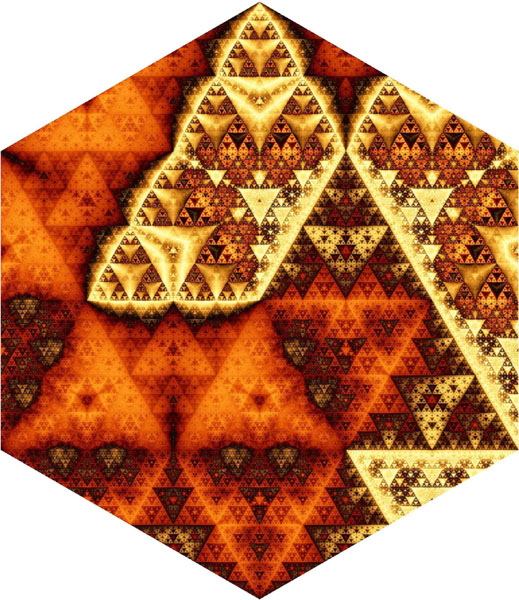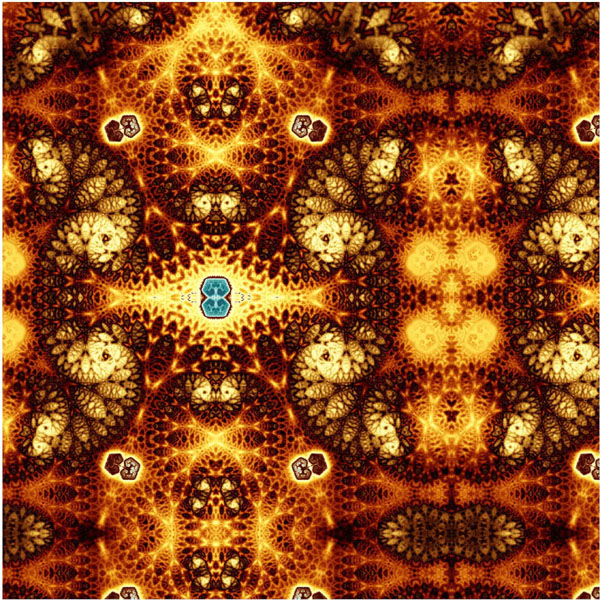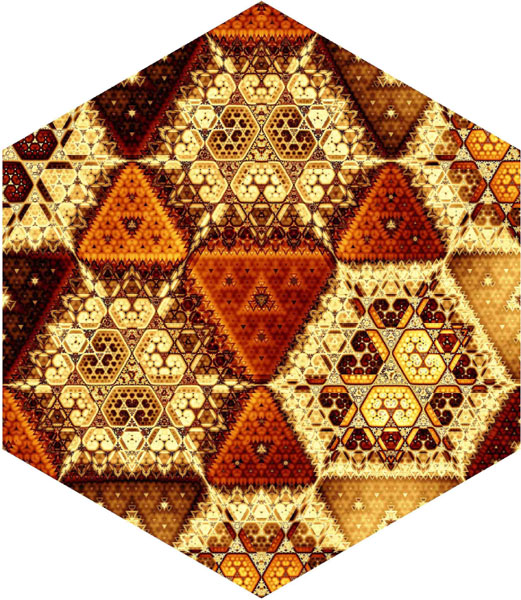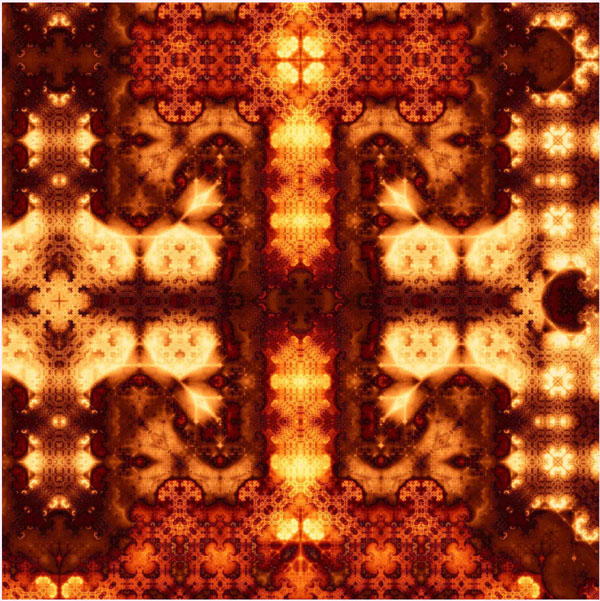Philip Van Loocke |
"Iterated folding of hexagonal twist"
Giclee print on photo paper, approx. 21x42 cm, 2009.

The hexagonal fold is performed on a
hexagon. Paper corners outside the resulting smaller hexagon are folded
inward.. This process is iterated many times. For each point on the
initial hexagon, a series of points is obtained. The series is turned
into color values with a technique based on reference points (see paper).
"Iteration of square folding #1"
Giclee print on photo paper, approx. 21x42 cm, 2009.

A simple fold-transformation maps a
square on a smaller square. At subsequent iterations, the crease pattern
is cyclically translated and rotated. The rendering technique is based
on reference points.
"Iterated hexagonal folding #1"
Giclee print on photo paper, approx. 21x42 cm, 2009.

A transformation which folds a hexagon in
a smaller hexagon is recursively applied. This rendering is based on
distance of points to the crease pattern.
"Iterated folding of square twist"
Giclee print on photo paper, 21x42 cm, 2009.

The square twist is performed on a
square, after which a blintzing is applied. This process is iterated
many times. Each point on the initial square leads to a series of
points, which is transformed into color values with a technique based on
reference points.
Prof. Philip Van Loocke, Liaison officer art/science, University of Ghent
Wulveringem (Belgium)
"I create art based on mathematical models. The art in turn defines
mathematical problems.
For instance, when trying to identify or classify fold-transformations
which create fractals of the type illustrated, many open problems are
encountered."